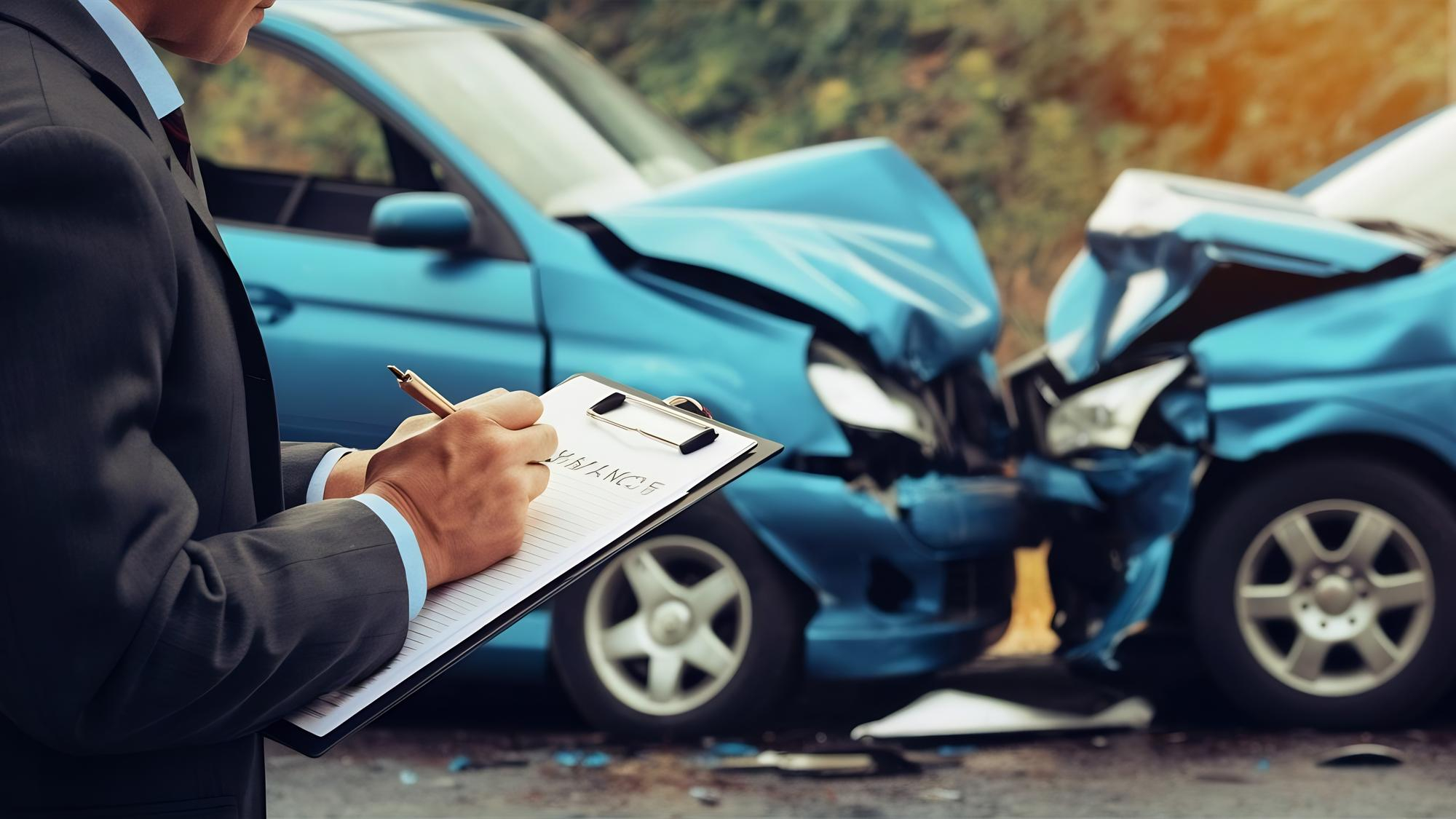California Code of Civil Procedure 377.60 maintains that “A cause of action for the death of a person caused by the wrongful act or neglect of another may be asserted” by the family of the decedent or a personal representative.
Incidents leading to wrongful death claims include:
- Intentional actions such as assault
- Medical malpractice such as improper care
- Negligent actions such as car accidents
These claims are meant to claim compensation for:
- Decedent’s pain and suffering
- Funeral expenses and burial costs
- Loss of income of the decedent
- Survivors’ loss of companionship
This is different from loss of consortium claims which are meant to compensate those who have lost the companionship of someone who is still living.
A wrongful death lawsuit is different from a homicide case. Wrongful death is a civil matter whereas homicide is criminal. Civil cases are proven by preponderance of the evidence and punishment is financially based. Criminal cases are proven beyond a reasonable doubt and punishment is often imprisonment or probation.
Wrongful death claims are often made alongside CCP 377.3 which maintains “A cause of action that survives the death of the person entitled to commence an action or proceeding passes to the decedent’s successor in interest” which is claimed by a personal representative of the decedent. This is also known as a survival cause of action and is meant to compensate the decedent rather than their family.
One notable difference between a wrongful death lawsuit and a survival cause of action is that punitive damages are only recoverable for the latter.
Who Can Sue in a Wrongful Death Lawsuit?
According to CCP 377.60, there are specific people who are permitted to sue in a wrongful death lawsuit. The first and most likely group of people entitled to file a wrongful death claim include:
- Surviving spouse
- Domestic partner
- Children
- Grandchildren (if decedent’s children are deceased)
If the deceased person is not survived by anyone, a wrongful death claim can also be made by:
- Parents
- Siblings
- Or anyone else that would be a beneficiary of the decedent’s property
The last group of individuals that can bring a wrongful death claim are those that can prove that they were financially dependent on the deceased person.
- Putative spouse
- Putative spouse’s children
- Stepchildren
- Legal guardians (if parents are deceased)
When is Someone Liable for Someone Else’s Death?
There are many reasons why someone may be considered liable for someone else’s death, such as:
- Intentional wrongdoing
- Negligence/Gross negligence
- Recklessness
Situations that fall under these categories include:
- Assault and battery
- Bike accidents
- Car accidents
- Child abuse
- Child neglect
- Drowning
- Elder abuse
- Elder neglect
- Manslaughter
- Medical Malpractice
- Murder
- Pedestrian collisions
- Slip and fall accidents
In some instances, people can sue for wrongful deaths that result from dog attacks and defective products, even if there was no negligence or intent. It is also possible to recover for a wrongful death even if the defendant was found not guilty on corresponding criminal charges.
Civil Wrongful Death Claims vs Criminal Cases
When a person is being charged with a crime, they are being charged by the government, be it local, state, or federal. The criminal charges related to causing someone’s death include homicide, manslaughter, and criminally negligent homicide. The judge decided on the punishment in accordance with the penal code. Punishment within the criminal justice system can sometimes be monetary, but can also include things like community service, probation, or even prison time.
Ordinary citizens are able to file civil lawsuits against each other for financial compensation. People can ask to be compensated for economic damages such as medical bills, and non-economic damages such as pain and suffering. Lawyers can help negotiate a settlement or take the matter to court, but any and all punishments are always monetary.
Is it Hard to Prove Wrongful Death?
Wrongful death lawsuits can often be difficult to prove. There are four separate legal elements to a wrongful death, and the plaintiff must prove all of them. Even proving three out of four does not meet legal standards and will result in a lost case. While this can be difficult, it can still be easier than trying to prove a criminal case where the prosecution must prove guilt beyond a reasonable doubt. Like all civil cases, the burden of proof in a wrongful death lawsuit is preponderance of the evidence. The burden is on the plaintiff to show that it is more than likely that their claims are true. This means there needs to be at least a 51 percent chance or more that the plaintiff’s claims are true in order for the burden of proof to be met.
What Do You Need to Prove Wrongful Death?
There are four separate elements that all need to be proven in order to make a valid wrongful death case.
Action was negligent – Negligence is the failure to act within a reasonable standard of care to an extent that causes harm to someone else. In order to be compensated for a wrongful death claim, the plaintiff must prove that the death was caused by the negligent, reckless, or careless actions of the defendant.
Breach of duty – The plaintiff must also prove that the defendant owed the decedent a legal duty of care, and that the breach of that duty caused the decedent’s death. This means that they were responsible for behaving in a reasonable manner so that their actions did not harm others. Doctors have a duty of care to their patients, drivers have a duty of care to the people around them, teachers have a duty of care to their students. That duty is breached when the person’s action or inaction is unreasonable for the situation. This could be done deliberately, carelessly, or recklessly.
Causation – After proving that the defendant acted negligently, and that those actions were a breach of duty of care to the decedent, the plaintiff must then prove that this all led to the death itself. Whether in part or in whole, it must be proven that without those actions, the death would not have occurred. However, they do not have to prove intent or that the harm caused was deliberate, only causation.
Damages – Finally, the plaintiff must prove that the loss of the decedent caused quantifiable legal damages for them, such as medical bills and funeral costs.
What Damages Can Be Recovered in a Wrongful Death Lawsuit?
Damages are the losses being claimed by a plaintiff. The point of awarding damages in a wrongful death case is to compensate family or dependents for the loss of support that the decedent would have given had they lived. Sometimes these damages are paid all at once as a lump sum, or they can be paid bit by bit over time as a structured settlement.
The time period that these damages are meant to compensate for is either the remainder of the decedent’s life expectancy, or the remainder of the plaintiff’s life expectancy, whichever is shorter. This is considered a question of fact, which is determined by a jury as opposed to a question of law which would be determined by a judge. Guidelines for jurors are laid out in the Judicial Council of California Civil Jury Instructions (CACI). The extent of a person’s life expectancy is generally calculated using factors such as the person’s health and way of life.
The two types of damages that can be recovered are known as economic and non-economic damages.
Economic Damages
According to the Judicial Council of California Civil Jury Instructions (CACI), there are various economic damages that may be recovered in a wrongful death suit:
- Financial support that the decedent would have given (not adjusted for inflation)
- Gifts or benefits that would have been received from the decedent
- Funeral and/or burial expenses
- A reasonable monetary value of services they would have made to the household
Non-Economic Damages
Non-economic damages in a wrongful death suit are meant to compensate for the intangible losses such as:
- Affection
- Companionship
- Guidance
- Moral support
- Sexual intimacy
While a person can sue for damages to compensate the decedent’s pain and suffering prior to death, they cannot sue for their own pain and suffering or bereavement.
Juries are allowed to use their discretion when awarding non-economic damages and are not held to a set standard beyond what is reasonable in accordance with the evidence.
There is no maximum cap on the damages that can be recovered in a wrongful death suit in California, however the cap on medical malpractice suits can be enforced when applicable.
Wrongful Death Settlements
If a plaintiff can prove all four elements of their case, they may receive compensation. Sometimes, these cases are handled in court with a judge and jury deciding on the matter. However, they are often reach settlement out of court before ever going to trial.
If a defendant is found liable for someone’s death, their insurance company may pay out a settlement. These settlements are paid to the decedent’s family and not their estate. Furthermore, the IRS considers payouts from wrongful death settlements to be not part of a person’s gross income and non-taxable.
How Are Wrongful Death Settlements Calculated?
There are many things that are taken into consideration when calculating a wrongful death settlement. One factor is the defendant’s insurance coverage. Different policies have different maximum amounts that they’re willing and able to pay out. If the award is greater than what the insurance company can pay, the defendant may have to pay the rest out of pocket.
The facts of the case are also important. Since wrongful death lawsuits are categorized as a type of personal injury claim, they involve similar types of damages such as:
- Emotional distress
- Loss of companionship
- Loss of income
- Medical bills
- Pain and suffering
A wrongful death claim would also allow for damages such as funeral and burial costs as well as the value of household services the decedent performed. While some damages such as medical bills and funeral costs may be paid out to the estate, things like loss of companionship and lost income are generally paid out to the next of kin.
Factors That Can Impact Wrongful Death Claims
There are many different variables involved in a wrongful death claim. California law does not place a cap on damages, so there is no maximum limit to how much may be awarded beyond what is reasonable to the circumstances. Some of the factors considered are:
- Age of the decedent
- Details of the accident
- If the decedent had minor children
- How much the decedent’s family depended on them financially
- The level of involvement the decedent had within their community
These factors can sway a case in either direction. Someone who was older with no dependents would warrant as high of a claim as someone who was younger with a large family. Also, it is important to remember that if the victim is at fault for the accident, the amount that can be claimed decreases proportionally.
California’s “One Action Rule” for Wrongful Death Claims
California law does not allow for multiple wrongful death suits against one defendant. The one action rule dictates that all claims must be combined within the same action. The reason for this is both to prevent the defendant from having to fight multiple suits at once, and to prevent inconsistencies between multiple outcomes. This means that if a person does not get in on a suit being filed, they will not be able to bring their own later on. Because of this, when someone files a wrongful death suit, it is their responsibility to notify anyone else who may be eligible to join in on the claim. If they do not notify someone with a viable claim, it may fall to them to pay the omitted party their compensation. When filing a wrongful death suit, always have your lawyer notify anyone and everyone who may also have a valid claim.
Can Heirs Receive Punitive Damages?
As a general rule, California law does not permit punitive damages to be awarded for wrongful death claims. The only time a plaintiff may recover punitive damages for a wrongful death is when the defendant is convicted of felony homicide for the death in question. There is also a type of claim called a survival action, under which punitive damages may be awarded.
What is a Survival Action?
Unlike wrongful death claims, punitive damages can be awarded as part of a survival action.
A survival action is defined as “a cause of action that survives the death of the person entitled to commence an action or proceeding passes to the decedent’s successor in interest” according to the California Code of Civil Procedure 377.30. The statute of limitations for a survival action is two years from the injury or six months after death, whichever date comes later.
There are two different types of claims that a survival action can compensate for:
- Damages for unrelated matters that the decedent could have sued for
- Damages for the personal injuries the decedent suffered related to their death
Survival actions are similar to wrongful death claims and are often filed together, but there are a few notable differences. For one, wrongful death claims are made on behalf of the family to compensate for their losses, and survival actions are made on behalf of the estate to compensate for the decedent’s losses. Essentially, a survival action is the personal injury claim that the decedent would have filed if they had lived.
What is the Statute of Limitations for a Wrongful Death Claim?
For basic wrongful death claims, the statute of limitations to file a claim is two years from the date of death. Statute of limitations are strict and do not generally come with exceptions.
One exception is known as the discovery rule. If the person filing can prove that they had no reasonable way of knowing that the person had passed, they then have two years from the date they found out in which to file a claim.
When a wrongful death claim involves medical malpractice, the statute of limitations is a little different. The deadline to file a claim is either three years after the date of death, or one year after the date the medical malpractice was discovered, whichever date comes first.
Contact Mesriani Law Group if Someone You Know Was Wrongfully Killed
Losing someone is never easy. The work and arrangements that need to be done after the death of a loved one is difficult enough without the stress of fighting a lawsuit against those responsible. Having a wrongful death attorney can help ease this trying time and give you someone in your corner who knows how to get you the compensation you deserve. If you have lost someone due to someone else’s actions and feel you may have a wrongful death claim, call Mesriani Law Group today for a free consultation.
Wrongful Death Lawsuit FAQs
How much is a wrongful death lawsuit worth in California?
As with most lawsuits, the final compensation depends on the unique details of the situation itself. Some cases may only be worth tens of thousands, while others may be worth hundreds of thousands. Generally speaking, cases where the decedent had many dependents and was in no way at fault for the accident are going to be worth more than cases where the decedent had no dependents and was partially at fault. It also comes down to the skills of the attorneys handling the case.
Who gets the money in a wrongful death lawsuit in California?
Compensation from wrongful death claims are distributed to the family members of the decedent. There is a hierarchy involving intestate succession, with the spouse and children being the primary heirs, but anyone who is entitled to the decedent’s property may be eligible. Generally, the parties involved decide amongst themselves how they wish to divide the award.
What is considered wrongful death in California?
A California wrongful death claim is for when someone dies due to someone else’s actions. These actions can be accidents resulting from someone’s negligence such as a car crash, or they can be intentional actions such as assault. Medical malpractice can also be a common cause of wrongful deaths. In these situations, the surviving family members of the decedent may bring a wrongful death claim against the person responsible to compensate for their losses.
How do I prove wrongful death in California?
There are four elements that the plaintiff must prove when they file a wrongful death claim. These elements are that the defendant acted negligently, that the defendant owed the decedent a duty of care that was breached by that negligence, that those actions were the cause of the person’s death, and that the plaintiff suffered damages as a result. All four of these elements must be proven in order to have a viable claim.








